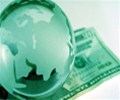The Fed lowered interest rates, but Powell predicted the move would probably be the last in 2025

Policy gaps within the U.S. central bank and a lack of federal government data may make another rate cut unattainable this year, Federal Reserve Chairman Jerome Powell said on Wednesday, as he acknowledged the threat officials see to the job market as well as the risky nature of making further rate moves without a more complete picture of the economy.
The Fed on Wednesday cut interest rates by a quarter of a percentage point, as expected, as a way to cushion further weakness in the job market. But the central bank’s new policy statement included several references to the lack of official data during the federal government shutdown, and Powell later told reporters that policymakers were likely to become more cautious if it prevented them from getting further jobs and inflation reports.
“We’re going to collect every piece of data we can find, evaluate it and think about it carefully. And that’s our job,” Powell said in a news conference after a two-day policy meeting, ticking off private data the Fed could use, as well as internal surveys of business executives and less formal interviews with contacts across the country.
“If you ask me if it’s going to affect… the December meet, I’m not saying it will, but yeah, you can imagine it. You know, what do you do if you’re driving in the fog? You slow down.”
His comments indicate a growing dilemma for the Fed as the budget dispute between the Trump administration and Democrats in Congress has entered its second month, with the administration unable to conduct surveys and produce reports that are critical to central bankers’ policy decisions – in this case perhaps delaying President Donald Trump’s desired interest rate cut.
Beyond the data issues, Powell said there are “very different views” among his Fed colleagues on the right path for monetary policy going forward, with “increasing opinion now…feeling maybe this is where we should at least wait a cycle” before lowering interest rates again.
Financial markets responded to Powell’s remarks by reducing bets on another rate cut at the Fed’s Dec. 9-10 meeting, a prospect now considering two-to-one odds, with the S&P 500 ending the day mostly flat after giving up earlier gains.
“Powell explicitly signaled a break between this meeting and future meetings,” when he managed a policy-setting committee that approved successive interest rate cuts in September and October even though many of its members remained concerned that inflation was expected to rise through the rest of 2025, said Michael Pearce, deputy chief U.S. economist at Oxford Economics.
Even those who emphasize possible weakness in the job market agree that the Fed must now act cautiously.
The economy continues to provide mixed signals, Powell said, with “bifurcated” consumers emphasizing the lower end of the income distribution, but those at the high end spending strongly, and economic growth supported by business investment even though this has not resulted in strong job growth.
The latest interest rate cuts drew dissent from two policymakers, with Fed Governor Stephen Miran again calling for deeper cuts in borrowing costs and Kansas City Fed President Jeffrey Schmid not wanting a cut at all given ongoing inflation.
This is the third time since 1990, according to data from St. Louis. Louis Fed policymakers differed on different policy directions, a sign of split opinion at the central bank on the direction of the economy.
‘SOLID’ POLICY DECISIONS
Powell still called the Fed’s decision with a 10-2 result to support lowering the benchmark interest rate to the range of 3.75%-4.00% as “solid” support for easing policy to help support a labor market that is gradually slowing.
But “there are strong differences of view on how to proceed with the meeting in December,” Powell said, a particularly blunt comment about the upcoming meeting, something Fed leaders typically avoid.
“A further cut in the policy rate at the December meeting is not a certainty. Far from it, policy is not on a predetermined path,” he said.
Powell said his own view is that current policy rates remain “a bit restrictive” and are still putting pressure on inflation, which he said as a base case would likely rise temporarily in the coming months due to the Trump administration’s import tariffs, but then fall.
“I don’t think it’s appropriate to ignore or ignore the inflation issue; at the same time I think the risk of higher, more persistent inflation has declined significantly since April,” Powell said, adding that the Fed will resume its interest rate cuts at some point in the future. “I think we’re trying to end this cycle with good labor market conditions and inflation close to 2% or 2%.”
Policymakers at the Fed acknowledged limitations in the decision-making process due to the government shutdown, and estimated the unemployment rate in August – the month in which the last official jobs data was released – and noted that “available indicators suggest” the economy continues to grow at a moderate pace.
Inflation has not risen as strongly as previously thought due to the White House’s new import taxes, but it has risen from about 2.3% in April to about 2.7% in August, according to the last official estimate released for the Personal Consumption Expenditure Price Index before the close. The Fed uses the PCE to set an inflation target of 2%, and in projections released in September, policymakers expected that figure to rise to 3% by the end of this year.
The Fed also announced on Wednesday that it would restart limited purchases of Treasury securities after money markets showed signs that liquidity was becoming scarce, a condition they had vowed to avoid.
The decision to end balance sheet drawdowns will keep the central bank’s total holdings of about $6.61 trillion steady on a monthly basis as of Dec. 1, but will shift its portfolio by reinvesting proceeds from maturing mortgage-backed securities into Treasury bills.
Source: Reuters
